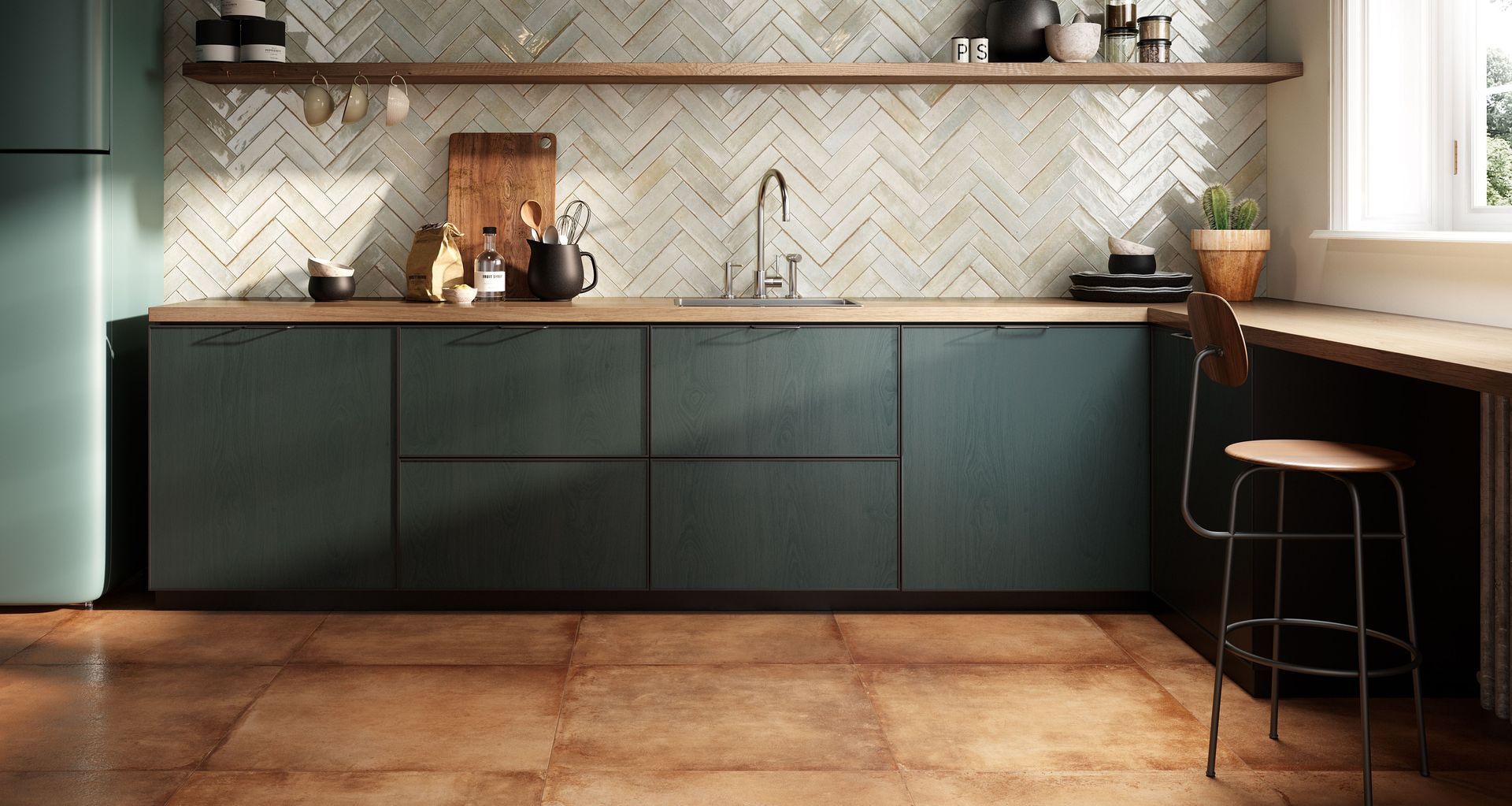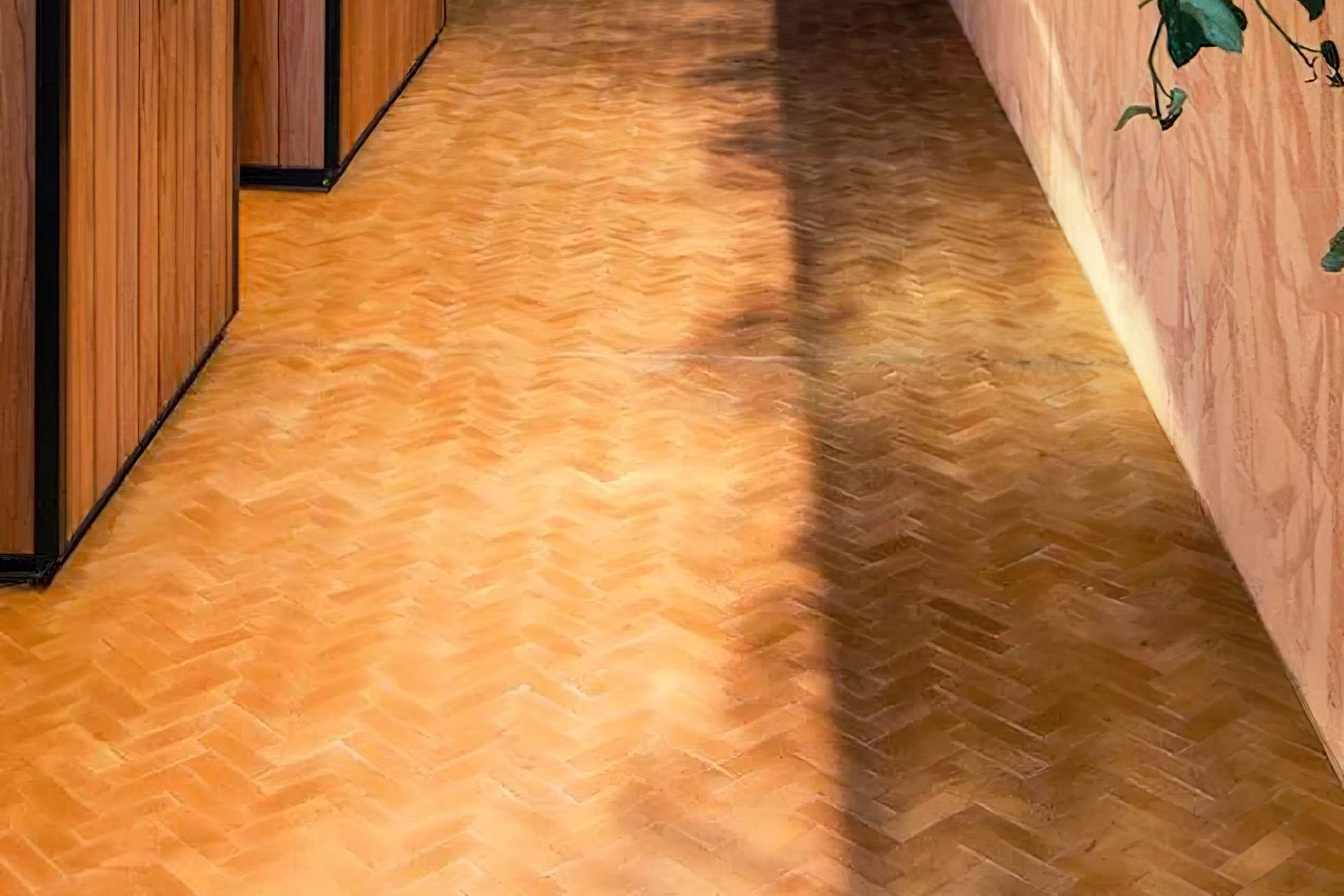Choosing the right fit: An overview of floor tile sizes in Australia

If you've decided to refresh your floors with tiles, you need to make sure the tiles you choose are the correct size for the space. It may seem like a simple task, but once you dive into it you'll soon discover that there is more too it than meets the eye. Selecting the right size isn't as simple as choosing large tiles for large rooms, or small tiles for small rooms, and unfortunately there is no 'one size fits all solution'.
What are the standard floor tile sizes in Australia?
There isn't a single "standard" size for floor tiles, but the most popular floor tile size in Australia is 600x600mm. Here's a breakdown of the other floor tiles sizes to look out for:
Small tiles
Floor tiles can be as small as 100x100mm but you'll most likely see them around 200x200mm and 300x300mm. Small tiles are popular for in small bathrooms and laundry rooms.
Medium tiles
Medium sized tiles range frim 300x300mm size tile right through to 600x600mm. These sized tiles can be used in a variety of spaces, inside and out, such as bathrooms, kitchens, hallways, patios and decks.
Large tiles
Large tiles come in a variety of sizes: 800x800mm, 1000x1000mm are the most common. Rectangular tiles cam come in 450x900mm, 600x1200mm, 1200x2400mm and so on. Large slabs of up to 3000mm are also available.
Factors to consider when choosing the size of a tile
Now that you have an idea of the common tile sizes the next step is choosing the right tile size for the space you have in mind. Here are a few key factors to keep in mind:
Measure your space
Start by getting the exact dimensions of the floor you're tiling. Use a tape measure to measure the length and width of the room. Multiply these two figures together to get the total square metres.
Think about what you use the room for
Considering the room's primary purpose is important, as this can impact the tiles you choose. For example, porcelain or ceramic tiles work well on floors in areas prone to moisture, like bathrooms or kitchens, whereas concrete slabs or tiles can work well in outdoor areas.
Evaluate lighting and colour
The colour of your tiles can impact the brightness of your room. For example, light-coloured tiles can be an excellent choice for darker or dimmer areas; darker or textured tiles work well for more well-lit areas.
Mock-up your design
Once you've chosen your tiles or have an idea of the tiles you like, you can go and get some samples and see how they'll look in your room. To do this, place them in the intended space to see how they look under the room's natural and artificial lighting; this will help you visualise the final look and feel.
Consider installation
Think about who will install the tiles. Professional installers can handle the job effectively, particularly if you need a large floor tiling, but you can do this yourself if you have the expertise.
Budget accordingly
You may already have a budget in mind before choosing your tiles. If you still need to, you can work out the general price by having your floor measurements ready and seeing how much a tile costs per square metre. You can also add an extra 10-15% for additional fees and unexpected expenses, such as spare tiles, breakages, etc.
Recommended tile sizes for different spaces in the home
Finally, to make life even easier, we've included a few recommendations based on the type of room you're looking to refresh in the home. These will not necessarily apply to every situation as rooms come in all shapes and sizes, but will generally work across the board.
Bathroom floor tiles
In bathrooms, smaller tiles (e.g., 300x300mm) are often recommended due to their greater grout lines, which can help prevent slipping in wet conditions. This size is particularly beneficial for shower floors, where slip resistance is important. However, for the main bathroom area, medium-sized tiles (e.g., 450x450mm to 600x600mm) can also be used effectively to create a greater sense of space.
Related Article: How to Choose Bathroom Tiles - 7 Top Tips
Kitchen floor tiles
Kitchens benefit from medium to large format tiles (e.g., 600x600mm or larger) to minimise grout lines and simplify cleaning in areas prone to spills and stains. Large format tiles (e.g.600x1200mm) can also be considered.
Living room and dining room floor tiles
For living and dining areas, large format tiles (e.g., 600x600mm, 800x800mm, or even larger sizes like 600x1200mm) are favoured. These sizes help in achieving a modern and open feel, making the space appear more extensive.
Outdoor living area floor tiles
Outdoor areas often use larger format tiles (600x600mm and above). For areas like pools or wet zones, smaller tiles or specialised custom outdoor mosaics may be preferred for their grip and slip resistance, which helps to create a safer space.
Popular tile types to consider for your floor
Here are some common types of tiles that you may want to think about applying to your floor:
Porcelain tiles
Porcelain tiles are renowned for their strength, resistance to moisture, and minimal upkeep. Manufactured through a process of firing at high temperatures, they come in a vast array of designs, including those that mimic natural stone, hardwood, and concrete.
Ceramic tiles
Similar to porcelain, ceramic tiles offer a slightly less dense option but with a wide variety of finishes and designs. They are cost-effective, easy to clean, and suitable for interior floors.
Natural stone tiles
Natural stone tiles, such as marble, granite, slate, and limestone, bring a unique beauty to floors, each with its distinct veining and patterns. They require more maintenance than manufactured tiles, including sealing to prevent stains and water damage.
Vinyl tiles
Vinyl tiles offer a durable and cost-effective solution, with modern luxury vinyl tiles (LVT) providing a high degree of realism in mimicking other materials. They are comfortable underfoot, resistant to moisture, and come in a variety of designs, including wood and stone effects, making them suitable for both kitchens and bathrooms.
Mosaic tiles
Mosaic tiles are small, often colourful tiles made from various materials including glass, ceramic, or natural stone. They are typically used in specific areas like bathroom floors, shower floors, and as decorative accents due to their slip resistance and artistic potential. Mosaics allow for creative patterns and designs, adding character and flair to any space.
Subway tiles
Traditionally used on walls, subway tiles have also made their way to floor applications, particularly in bathrooms and kitchens, for those seeking a retro or urban aesthetic. While not as common for entire floor installations due to their size and shape, they can be used effectively on bathroom and kitchen floors when paired with the right grout and slip-resistant finish.
Related Article: 18 striking types of tiles to consider for your home in 2024
Selecting the right sized tiles for your home
With a proper understanding of the standard floor tile sizes available, some of the types of tiles that can look great on a floor, and the criteria to help you decide, you're well-placed to find an option that looks stylish and fits your space's functional requirements.
Browse a range of stylish floor tiles from Australia's top suppliers on ArchiPro





